Contents
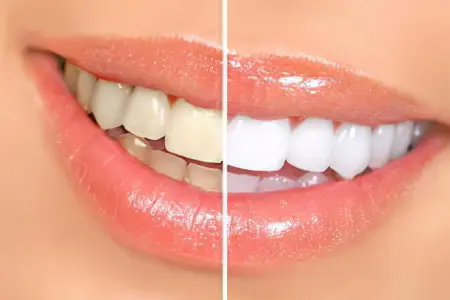
Teeth whitening, along with caries treatment, is one of the most popular dental procedures. A snow-white smile is a sign of beauty, health and well-being, therefore, in pursuit of it, people do not spare money and time.
In the arsenal of modern dentistry, there are a lot of teeth whitening products that can lighten enamel by 4-8 tones. Such opportunities are provided by in-office whitening, which is carried out using special dental equipment. There are also special products for home use – whitening gels with caps, which do not give such stunning results, but also allow you to get rid of yellow and brown spots on tooth enamel.
However, it should be remembered that snow-white “tiled” teeth do not always indicate health, and radical whitening in most cases damages tooth enamel and provokes a number of dental problems. At home, you can whiten your teeth no more than 1-2 tones – not enough for a Hollywood smile, but quite good for a healthy and attractive appearance of teeth.
Who should really whiten their teeth?
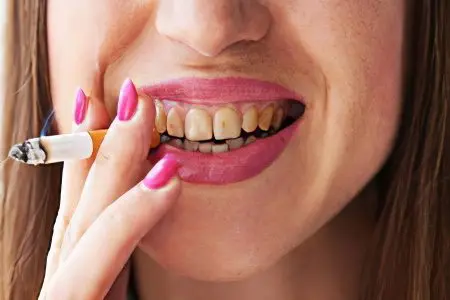
The main reason for teeth whitening is the darkening or yellowing of tooth enamel, when plaque penetrates the teeth so deeply that ordinary hygiene procedures do not help get rid of it.
Causes of darkening of the enamel:
Smoking. Nicotine settles on tooth enamel and penetrates deep into it. Teeth acquire an extremely unaesthetic “smoky” appearance. Toothpastes with a whitening effect are too mild to cope with tobacco tar and nicotine. Home whitening will restore the natural whiteness of the teeth, but they can darken again under the influence of a negative habit;
Excess consumption of sweets. The interaction of microorganisms living in the mouth with carbohydrates leads to biochemical reactions with the release of various substances. They are aggressive to the teeth. The enamel becomes so thin that yellow dentin shows through;
Drinking coffee and strong tea. Drinks with dyes negatively affect the color of tooth enamel, which after that can no longer be called snow-white. Enamel color is influenced by red wine, strong tea, natural and instant coffee. Brown plaque on the teeth quickly appears with the regular use of these drinks;
Use of the antibiotic tetracycline. If the expectant mother took tetracycline while expecting a child, the rudiments of his teeth will turn yellow. The same effect occurs if children take tetracycline during early tooth formation (“tetracycline teeth”);
Excess intake of fluorine compounds. Environmental problems associated with poor-quality water or air, food, can cause the development of fluorosis due to an excess of fluoride in the body. This disease is characterized by pockmarked enamel (“mottled teeth”);
Underdevelopment of dental tissues. Hypoplasia appears on the teeth as white or yellow spots. They are symmetrical and have the same size. If signs of hypoplasia are noticeable when communicating with a person, the affected areas of the teeth are filled or whitened.
What you need to know before undertaking to whiten your teeth at home?
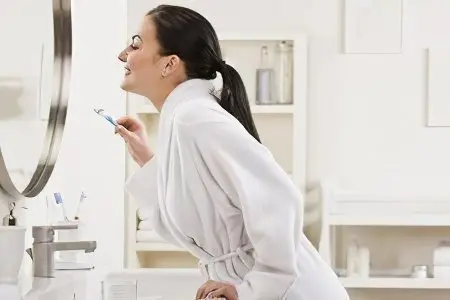
Teeth whitening is similar to hair bleaching, it affects human health. To minimize the harm done to the body is the main task in whitening.
Before whitening teeth, it is advisable to consult a dentist to assess the quality of tooth enamel. It must be strong enough and have the required thickness. The yellowness formed on the teeth should not penetrate far deep into the enamel, in which case the home procedure will not bring results.
Dental health before a home cosmetic procedure is assessed for pathologies: periodontitis, periodontitis, alveolar processes, cement fillings, abnormal eruption of wisdom teeth.
An assessment of the condition of the seals will not be superfluous. If there are gaps between the filling and the tooth tissue, an aggressive substance will penetrate through them and cause the destruction of the tooth from the inside.
After processing the enamel and obtaining the desired effect, it is undesirable to smoke and consume products with coloring pigments. Hygienic brushing should be done with a soft toothbrush, as stiffer bristles can cause discomfort. Whitening toothpaste will help maintain the achieved effect.
The procedure for whitening tooth enamel is repeated after 2-4 months.
Who should not whiten their teeth and when?

Before you start whitening your teeth at home or at the dentist, you need to determine the cause of the change in their shade. Darkening or yellowing of teeth can be external and internal, and only external staining can be corrected by folk methods. The internal causes of tooth discoloration can be very diverse, ranging from enamel hypoplasia, through which darker dentin tissues are visible, to chronic accumulation of brass, tin, iron and other substances.
In addition, there are a number of contraindications for teeth whitening:
Pregnant women, people with systemic diseases should not be bleached in dental offices. Alternatively, you can use some of the home whitening products that are gentle on tooth enamel, such as activated charcoal;
Periodontal diseases are a contraindication to whitening, since brightening components can aggravate the condition of tissues, provoke bleeding gums and a number of other pathologies;
Patients with large carious cavities and untreated diseases of the teeth and gums are contraindicated in bleaching;
People who have a lot of fillings in prominent areas are not recommended to whiten their teeth, since the aesthetic value of the result in this case is minimal – the fillings either cannot be whitened or are lightened too much. After the whitening procedure, they will have to be replaced, which can be difficult if there are a lot of fillings;
Teeth whitening is contraindicated for children under 16 years of age, since their hard tooth tissues are not fully formed, and the bleaching agent can penetrate through them to the nerves and damage them;
People who wear braces or have recently removed them should not whiten their teeth. Braces themselves damage tooth enamel, especially in the areas of the teeth to which the locks are attached. After their removal, the teeth do not lose sensitivity for several more weeks, it is necessary to withstand this period until full recovery.
Ways to whiten at home
[Video] Dentist-therapist Juliusz Marek – Is it possible to whiten teeth with home remedies:
Toothpaste for home teeth whitening
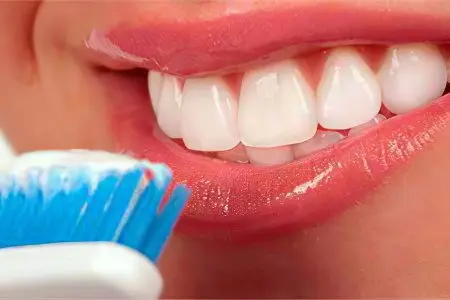
Whitening toothpastes are most often made on the basis of hydrogen peroxide, organic acids and components that soften their negative effect on enamel. There is another group of products, the effectiveness of which is based on the abrasive effect of dicalcium phosphate and silicon oxide.
In the first case, the enamel is lightened due to chemical acids and oxygen radicals that bleach the pigments. As a result, plaque dissolves, and the substances that gave the enamel a yellow-brown tint become colorless, the smile acquires the desired whiteness.
Papain-based pastes are considered the safest option, which gently removes plaque and prevents the formation of new deposits without thinning the enamel. But such pastes do not provide instant clarification, as products with more aggressive chemical components in the composition.
Teeth whitening with tea tree oil
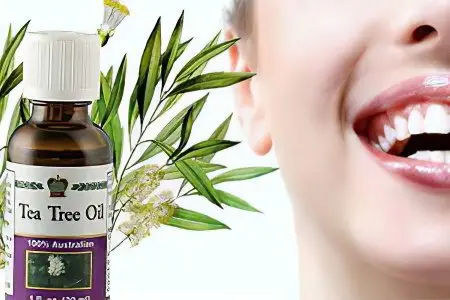
High-quality whitening can be carried out only with natural essential oil of 100% concentration. First, the usual cleaning of the teeth is carried out with a toothbrush and paste. Then 2-3 drops of essential oil are applied to the brush, distributed over the surface of the tooth enamel. Numbness of the cheek or part of the tongue is a side effect of the procedure, after which the oral cavity is thoroughly rinsed.
Cleaning the enamel with tea tree oil will remove not only plaque, but also tartar from it.
Modern home teeth whitening products
Whitening and strengthening teeth with rinses

Whitening mouth rinses are mild products that do not damage tooth enamel, but help restore its mineral composition.
They may contain harsh chemicals, such as active oxygen, which removes plaque, brightens teeth and prevents tartar formation. For patients with sensitive teeth and thinned tooth enamel, there are rinses based on plant extracts of cinnamon, tea tree, clove, mint. They not only prevent darkening of the surface of the teeth, but also have antibacterial properties, prevent caries and gum disease.
It is necessary to withstand the rinse in the mouth from one to three minutes, the volume for a single use is two tablespoons. Recommended for daily use for a month.
Home use of whitening gels
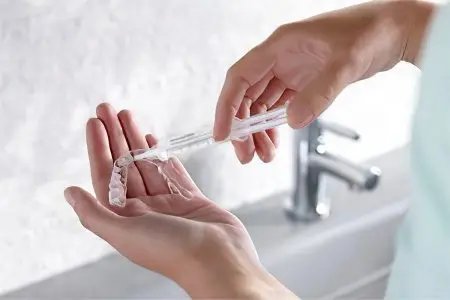
Home whitening gels are used together with special caps to increase the contact area of the active ingredients with the enamel and increase the degree of whitening. Mouthguards are made of flexible plastic or silicone and are worn on the upper or lower jaw, depending on which teeth need to be whitened.
The gel is supplied with the tray, or it is applied to the tray on its own. Means from different manufacturers differ in composition. Gels for intensive whitening of tooth enamel contain hydrogen peroxide, caps with this composition can be worn for no longer than half an hour, the procedure is repeated twice a day for a two-week course of treatment.
Gentle gels contain urea or carbamide peroxide in a small concentration, they can be worn without removing for several hours. Therefore, it is better to use these gels for night whitening at home. Moreover, wearing a mouth guard at work or in public places can cause inconvenience.
Ready mouthguards can be purchased at the pharmacy. However, they may not be effective enough, since the structure of the jaw and the sensitivity of the teeth are different for all people. To enhance the whitening effect, you can contact your dentist, who will make an individual mouthguard and help you choose the optimal concentration of active ingredients in the whitening gel.
Teeth whitening strips
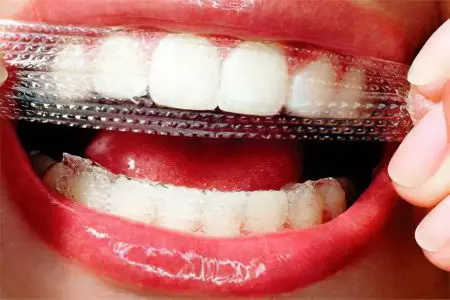
This modern tool will allow you to achieve a visible cosmetic effect in a short time. Special strips with a brightening composition applied to them can be purchased at the pharmacy network or in the online store. Consumers with sensitive teeth can purchase a more gentle teeth whitening option.
Using the strips is very simple – you need to apply them daily to your teeth and leave them there for at least half an hour. After a month, the enamel will lighten by about 2-3 tones. The effect of a snow-white smile will last a couple of months, then the tooth enamel will darken again. A side effect of the procedure is a temporary increase in tooth sensitivity.
Whitening strips are high-end products, they are in a different price category and are more convenient to use compared to gels and trays. The strips are firmly attached to the teeth, allowing you to talk during the procedure.
The disadvantage of any whitening strips is that it will not work to lighten the interdental spaces in this way.
Whitening pencil

This portable version of the whitening gel is applied with a special applicator. After a certain time, the composition is removed from the enamel. Consumers are offered stick models, the active substance of which is removed by saliva, without requiring special manipulations.
The concentration of whitening agent is negligible compared to the gel that comes with trays. Therefore, the pencil is used to maintain the whiteness of teeth in “marching” conditions, to remove stains from tea, coffee, and tobacco plaque.
Prevention of yellowing of tooth enamel
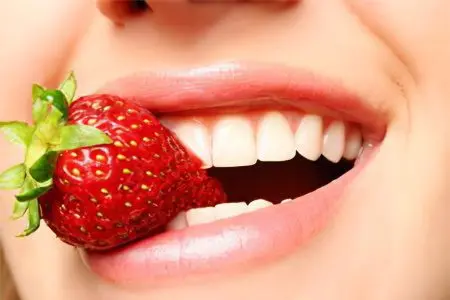
To prevent yellowing of the tooth enamel, it is necessary to adhere to the rules of oral hygiene and avoid eating foods with coloring compounds.
In addition to brightly colored sugary soda, hard candies, and chocolates, foods that cause enamel damage include:
Freshly squeezed and canned fruit juices – pomegranate, orange and others. In addition to coloring compounds (phenols), which are found in red berries and fruits, they have acid-forming properties, which enhances the enamel staining process;
Wine, and not only red, but also white wine is potentially dangerous. Red contains phenols and tannin, white promotes acid formation and contains tannins, which give tooth enamel a yellow tint;
Tea, coffee – with constant use provoke yellowing of tooth enamel no less than cigarettes. This is especially true for lovers of strong brewed black tea and coffee lovers who consume 3-4 cups of the drink per day;
Condiments, sauces and spices – curries, balsamic vinegar, ketchup can cause yellowing of the teeth if consumed in large quantities daily;
Fruits and vegetables of bright colors – blueberries, blackberries, beets, raspberries, cherries. With all the benefits of these products, their coloring properties cannot be denied. This does not mean that you need to completely cut them out of the diet, just that you need to take some precautions.
Contrary to the general belief that the harm of products that provoke enamel staining can be neutralized if you immediately brush your teeth after eating them, this is not the case. The fact is that enamel under the influence of acids immediately after eating becomes vulnerable. If you brush your teeth immediately after eating sweets or brightly colored fruits, you can mechanically damage the enamel, which only increases its sensitivity and contributes to the formation of stains.
It is better to take clean water in your mouth and hold it there for several minutes. It is also helpful to retain saliva in the mouth before swallowing it. Saliva contains natural ingredients that protect enamel from damage. These properties of saliva are used to promote chewing gums – the chewing process contributes to increased salivation. But chewing gum is not the best option for daily use, as it may contain harmful ingredients, aspartame and other sweeteners.

There are also products that contribute to the formation of a protective film, which makes the enamel temporarily resistant to the effects of coloring and acid-forming substances. Such foods (such as steamed broccoli) are recommended to be included in the diet more often, eating them before eating food that is potentially dangerous for the teeth.
Smoking is one of the most common causes of yellowing of the teeth, patients of dental clinics regularly whiten their teeth from the so-called “smoker’s plaque”. As a result of the constant influence of cigarette smoke, yellow-brown stains appear on the teeth. It is necessary to limit this bad habit or completely abandon it in order to avoid yellowing of the enamel.
Immediately after bleaching, it is recommended to avoid the use of coloring foods and drinks, smoking. This is especially true for laser or acid whitening procedures at the dentist – at this time, tooth enamel becomes especially vulnerable to pigments.
In order to prevent yellowing of teeth after bleaching and to maintain its effect for a long time, it is recommended to drink drinks that can cause pigmentation through a straw. This applies to red and other brightly colored fruit juices, soda, cocktails, tea and coffee – they are also drunk chilled through a straw.
How long does the whitening result last?
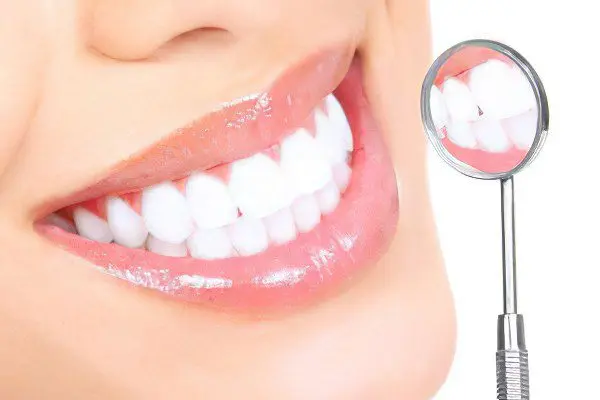
After a course of teeth whitening at home, the result can last from several months to a year, of course, subject to some changes in the usual diet. Then the enamel gradually loses its whiteness, becomes yellow or brown, and the course must be repeated.
Professional whitening keeps teeth white from six months to three years, if you follow all the precautions in the first days after the procedure. But teeth whitening in the dental office using AirFlow abrasive technology or acidic chemicals has more contraindications. Another significant drawback of such procedures is that the teeth can become hypersensitive for several weeks, which is why eating hot, sour and sweet foods, drinking tea and even breathing in cold weather becomes unbearable due to pain.
Author of the article: Muravitsky Boris Viktorovich, dentist, specially for the site ayzdorov.ru









